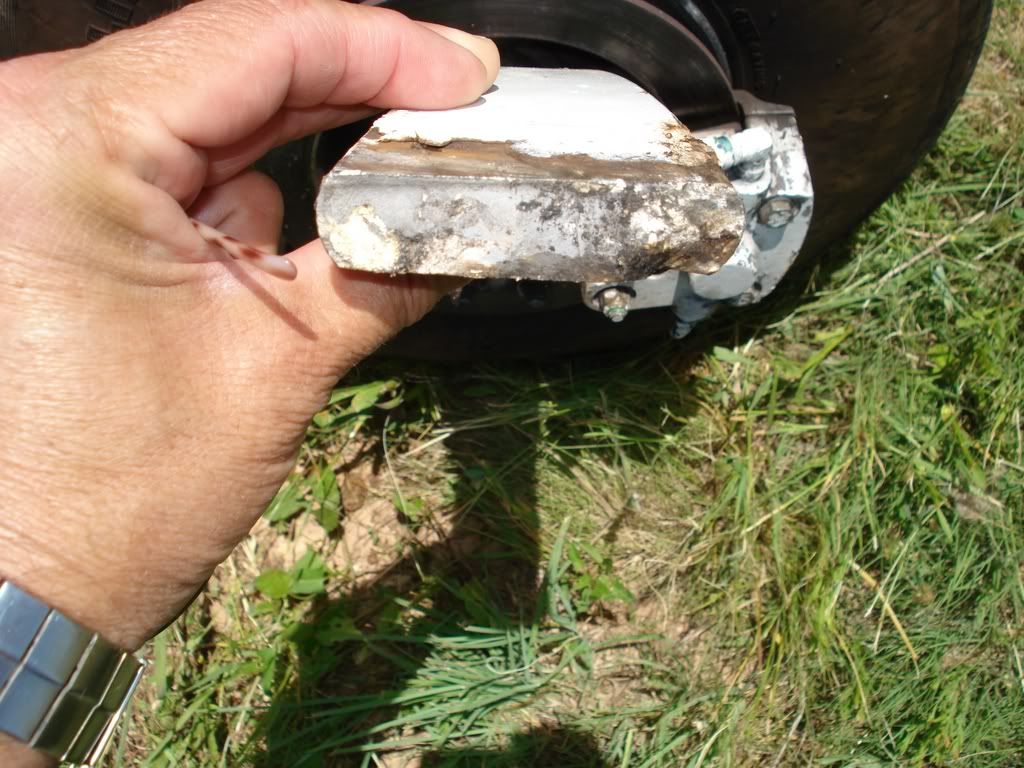Pertinent text:
"The left MLG broke on a 172K that did a ground loop on June 18, 2007. On May 6, 2006, the left MLG leg broke off at 4 inches from the axle attach point on an A185F. Both of these failures were due to corrosion/fatigue. Our records indicate 72 occurrences beginning in 1975 until the present time. Of these 72, 35 were identified as being axle and hardware failures; and 37 as being spring strut failures. Our analysis of the SDR and accident data indicate that, for the axle and hardware failures, the number of SDRs per year has dropped from 3.3 (1974 to 1981) to 1.0 since 1981; for the spring strut, the number of SDRs per year has increased from 0.6 (1974 to 1987) to 1.4 since 1987. We have reason to believe that wearout for the spring struts is about 3000 flight hours on rough terrain, and about 8000 flight hours on paved runways. At this time, we believe that our analysis is showing that these spring struts should be visual and NDI inspected every 2000 flight hours. The axle and hardware should be at least visually inspected every 2000 flight hours.
In 2001, the NTSB issued two safety recommendations: The first recommended an initial inspection at the next 100-hour or annual inspection; and the second recommended repetitive inspections at appropriate intervals.
At this time, the FAA has not made a determination on what type of corrective action (if any) should be taken. The resolution of this airworthiness concern could involve an Airworthiness Directive (AD) action or a Special Airworthiness Information Bulletin (SAIB), or the FAA could determine that no action is needed at this time. The initial Risk Assessment for this concern indicated that an AD or SAIB might be considered.
Enclosed are: (1) the Initial Risk Assessment Evaluation Chart (IRAEC), (2) a photograph of the latest failure, (3) the previous ACS dated 5/23/01, (4) FAA AC43-16A article dated July 2002, (5) a schematic of a spring strut, and (6) Cessna temporary revision to their service manual.
Comments
The FAA requests your comments.
Note: Any comments or replies to the FAA need to be as specific as possible. Please provide specific examples to illustrate your comments/concerns."
A photo of a failed spring strut was also sent to me by FAA. I responded to them that I believe that strut failed at the point where an entry step is normally clamped to the gear leg, and that is a common place for abrasion and corrosion to occur, and further that it is hidden beneath the mentioned step and therefore unlikely to be correctly inspected during preflight and 100 hr./annual inspection.
The 170 does not have such a step located upon the gear leg/spring strut , is more easily inspected by visual means, and therefore is not likely to suffer breakage in that area.
Please comment here (and to FAA if you wish) as to whether or not you have ever experienced this sort of failure on a 120/140/170 aircraft which does not have the entry step located on the strut. Please include any pics you may have via email to me, and include aircraft total time (if known). I have 30 days to make our association's position known.



